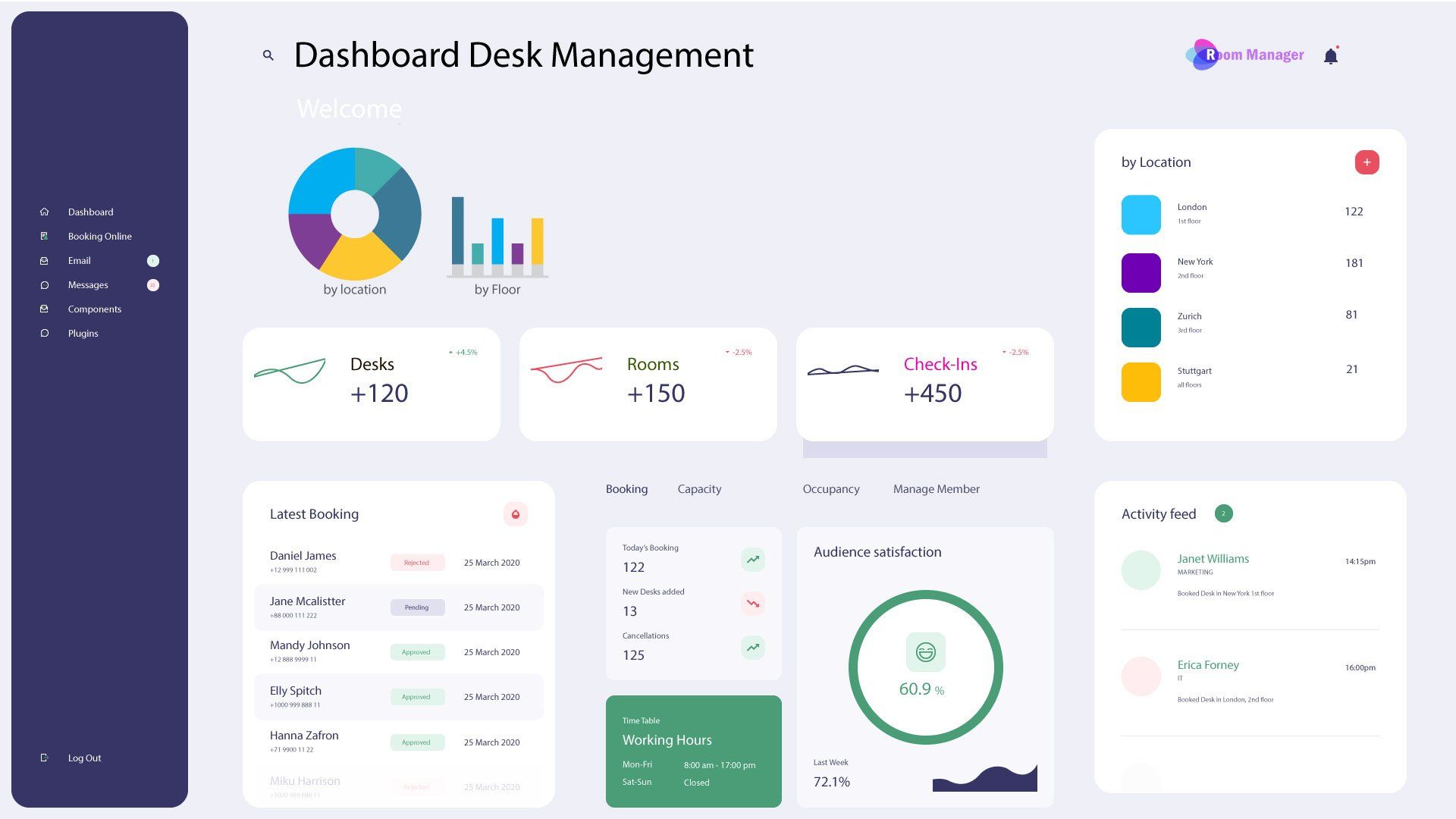In the fast-paced and ever-evolving world of business, effective workspace management plays a crucial role in boosting productivity and maximizing efficiency. With the rise of remote work and flexible working arrangements, organizations need robust software solutions to simplify workspace management processes and ensure seamless operations. This is where workspace management software comes into the picture.
What is Workspace Management Software?
Workspace management software refers to a set of digital tools designed to automate and streamline various aspects of managing workspaces, whether physical or virtual. It encompasses features like desk booking, conference room scheduling, resource allocation, visitor management, and more. By centralizing and automating these operations, businesses can simplify workflow, enhance collaboration, optimize space utilization, and improve overall productivity.
The Benefits of Workspace Management Software
Implementing workspace management software can yield a multitude of benefits, transforming the way your organization operates. Here are some key advantages:
1. Streamlined Reservation Process
Gone are the days of cumbersome manual booking systems and double bookings. Workplace management software facilitates seamless reservations for desks, meeting rooms, and other resources, eliminating conflicts and simplifying the process for employees. This saves time, reduces friction, and ensures efficient space allocation.
2. Improved Space Utilization
Optimizing workspace utilization is crucial for maximizing efficiency and reducing costs. Workspace management software provides real-time data on space occupancy, enabling organizations to identify underutilized areas and optimize their layouts accordingly. By effectively utilizing available space, companies can avoid unnecessary expenses associated with extra square footage.
3. Enhanced Collaboration and Visibility
Collaborative work environments require easy access and visibility into colleagues’ availability and locations. Workspace management software offers centralized directories and easily accessible calendars, allowing employees to quickly identify availability, book meetings, and coordinate effectively. This fosters collaboration, reduces miscommunication, and enhances productivity.
4. Increased Employee Satisfaction
Ensuring a comfortable, enjoyable workspace is crucial for employee satisfaction and well-being. By offering features like temperature and lighting control, desk preferences, and other personalized settings, workspace management software helps create an environment tailored to individual needs. Happier employees lead to higher productivity, reduced turnover rates, and a positive work culture.
5. Simplified Visitor Management
Visitor management can be time-consuming and challenging without proper tools in place. Workspace management software simplifies the process by allowing visitors to pre-register, generating digital badges, and providing automated notifications to hosts. This ensures a seamless experience for visitors, improves security, and saves valuable time for both employees and reception staff.
Key Features of Workspace Management Software
While different software providers offer varying features, here are some common functionalities to look for in workspace management software:
1. Desk Booking and Reservations
Flexible and intuitive desk booking options allow employees to reserve workspaces based on their needs, whether it involves hot-desking, fixed desks, or specific amenities.
2. Meeting Room Scheduling
Effortlessly schedule and manage meeting rooms, ensuring availability, and avoiding conflicts. The software should provide real-time information on room availability, capacity, and equipment availability.
3. Resource Allocation
Allocate and manage shared resources such as projectors, whiteboards, equipment, or other assets necessary for smooth business operations.
4. Visitor Management
A comprehensive visitor management system should allow for pre-registration, digital check-ins, badge printing, notifications, and easy host notifications to streamline the visitor experience.
5. Analytics and Reporting
Access to data-driven insights and reporting features allows organizations to analyze space utilization, identify patterns, and make informed decisions to optimize resource allocation.
Choosing the Right Workspace Management Software
When selecting the right workspace management software for your organization, consider the following factors:
1. Scalability
Ensure the software can accommodate your business’s growth and changing needs. It should easily scale with additional offices or remote teams.
2. Integration
Choosing software that seamlessly integrates with your existing systems (such as calendar platforms, room displays, etc.) will make the transition smoother and increase user adoption.
3. Customization
Look for software that allows you to customize features and workflows to match your organization’s unique requirements, ensuring maximum efficiency and alignment with existing processes.
4. Ease of Use
The software should have an intuitive and user-friendly interface, minimizing the learning curve for employees and encouraging widespread adoption.
5. Customer Support
Ensure the software provider offers reliable customer support, including training resources, responsive assistance, and updates to meet your evolving needs.
Conclusion
Workspace management software is an essential tool for modern businesses looking to optimize their operations, enhance collaboration, and boost productivity. By streamlining processes related to workspace reservations, resource allocation, and visitor management, organizations can create a more efficient work environment, increase employee satisfaction, and make informed decisions based on real-time data. So, take the leap and explore the vast benefits that workspace management software can offer for your business.
